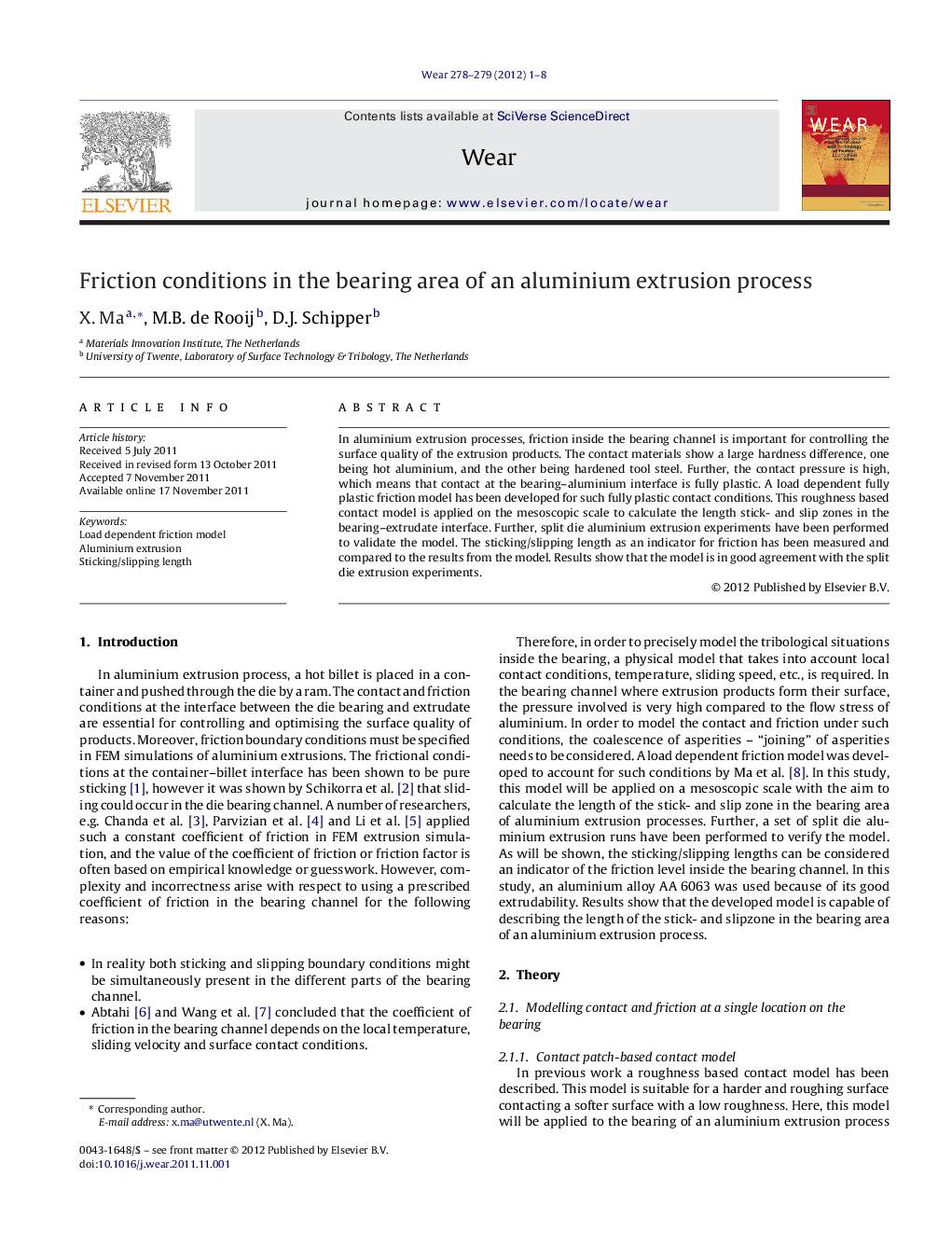| Article ID | Journal | Published Year | Pages | File Type |
|---|---|---|---|---|
| 617961 | Wear | 2012 | 8 Pages |
In aluminium extrusion processes, friction inside the bearing channel is important for controlling the surface quality of the extrusion products. The contact materials show a large hardness difference, one being hot aluminium, and the other being hardened tool steel. Further, the contact pressure is high, which means that contact at the bearing–aluminium interface is fully plastic. A load dependent fully plastic friction model has been developed for such fully plastic contact conditions. This roughness based contact model is applied on the mesoscopic scale to calculate the length stick- and slip zones in the bearing–extrudate interface. Further, split die aluminium extrusion experiments have been performed to validate the model. The sticking/slipping length as an indicator for friction has been measured and compared to the results from the model. Results show that the model is in good agreement with the split die extrusion experiments.
► In aluminium extrusion processes, friction inside the bearing channel is important for controlling the surface quality of the extrusion products. ► Contact and friction in the bearing–extrudate interface is modelled. ► Split die aluminium extrusion experiments have been performed to validate the model and the sticking/slipping length in the bearing area has been measured and compared to the results from the model. ► The coefficient of friction calculated from the model is in good agreement with the split die extrusion experiments.
